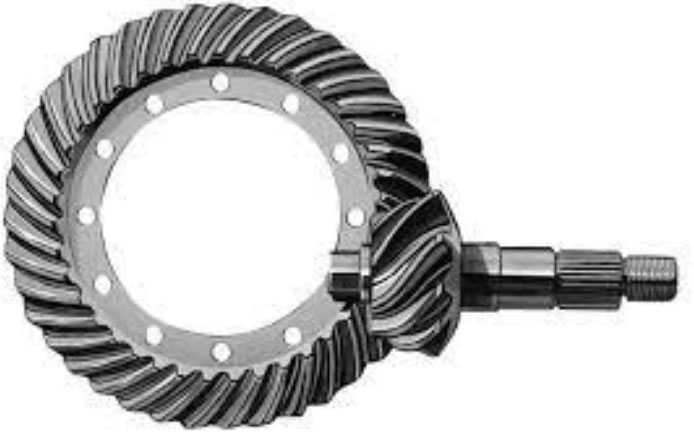The future of hypoid gears is expected to witness several innovations and emerging trends that will further enhance their performance and expand their applications. As technology continues to advance, here are some potential developments that can shape the future of hypoid gears:

- Advanced Materials: The use of advanced materials, such as high-performance alloys, composites, or coatings, can enhance the strength, durability, and wear resistance of hypoid gears. These materials can withstand higher loads and provide better performance in challenging operating conditions, making hypoid gears more versatile and reliable.
- Precision Manufacturing: Advances in manufacturing techniques, such as computer-controlled machining, 3D printing, or additive manufacturing, can improve the precision and accuracy of hypoid gears. This can result in tighter tolerances, better gear meshing, reduced noise, and increased overall efficiency. Precision manufacturing methods can also allow for more complex and optimized gear designs, leading to improved performance and increased customization possibilities.
- Enhanced Gear Design: The optimization of gear tooth profiles, such as tooth geometry, contact patterns, and load distribution, can further improve the efficiency and load-carrying capacity of hypoid gears. Computer-aided design (CAD) and simulation tools can aid in the development of innovative gear designs that maximize performance, minimize noise and vibration, and enhance durability.
- Noise Reduction Techniques: Noise reduction is a significant consideration in many applications. Future innovations may focus on developing advanced noise reduction techniques for hypoid gears, such as the use of advanced gear tooth profiles, vibration dampening materials, or optimized gear meshing configurations. These advancements can contribute to quieter gear operation, enabling their use in noise-sensitive environments.
- Integrated Sensor Technology: Integration of sensor technology can provide real-time monitoring and feedback on gear performance, allowing for predictive maintenance and early detection of potential failures. Sensors embedded within hypoid gears can monitor parameters such as temperature, vibration, and load distribution, enabling proactive maintenance and optimizing gear performance and lifespan.
- Smart Lubrication Systems: Advancements in lubrication systems can enhance the efficiency and durability of hypoid gears. Smart lubrication systems that monitor lubricant conditions, adjust lubrication levels, and provide real-time feedback on lubrication performance can optimize gear operation, minimize wear, and extend the gear’s lifespan. This can result in improved efficiency and reduced maintenance requirements.
- Integration with Industry 4.0: The integration of hypoid gears with the concepts of Industry 4.0 and the Internet of Things (IoT) can revolutionize gear performance and maintenance. Connectivity and data exchange capabilities can enable real-time monitoring, remote diagnostics, and predictive maintenance for hypoid gears. This integration can enhance overall system efficiency, minimize downtime, and optimize gear performance in various industrial applications.
In conclusion, the future of hypoid gears is likely to witness advancements in materials, manufacturing techniques, gear design, noise reduction, sensor technology, lubrication systems, and integration with Industry 4.0 concepts. These innovations and emerging trends can enhance the performance, durability, efficiency, and customization possibilities of hypoid gears, expanding their applications in a wide range of industries such as automotive, aerospace, robotics, renewable energy, and more. The continuous development of hypoid gears will contribute to the advancement of machinery and technology in the years to come.
